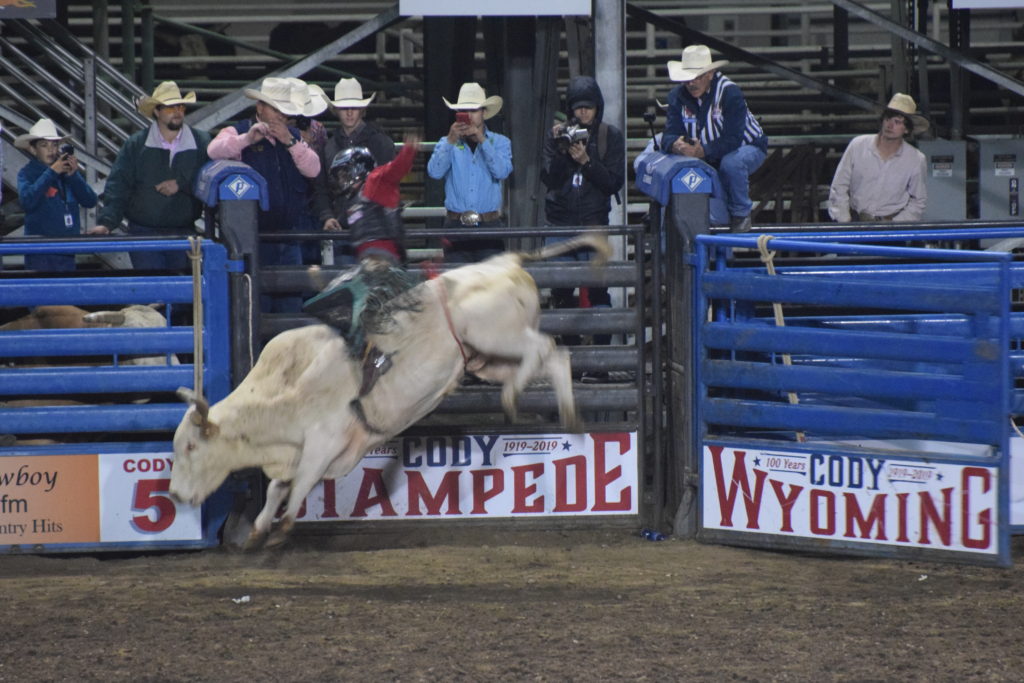We left South Dakota after 2 weeks for our next-to-last stop at Cody, Wyoming, before we meet up with our Canada/Alaska Caravan. I knew we would have to cross the Big Horn Mountain but I did not know how much I would regret the route we took. Both 14A and Route 16 are marked as scenic routes, so I assumed they would be the hardest to cross. I did see a sign that Route 16 was the lowest elevation crossing, but because it was called a scenic drive, I think Randy and I both assumed it would be the more difficult route. I should have researched the route a little more before we left. US Highway 16 is called the “Sweet 16” and is considered the best and easiest route to Yellowstone Park because of its low grade and gentle curves. It still probably has some steep drop offs, but I do not think it would have been as steep as Route US 14 that we took. We did get to see some amazing rock formations and wildlife (we even got to see our first moose—mother and baby) but I did not like the steep grade and vertical drop offs with nothing on the other side of the low guardrails. It was bad enough for me going up the incline, but going down was way worse. Once we got over 8,000’ elevation my ears were popping like crazy. The summit was gorgeous with beautiful meadows and there was even some snow on the higher elevations. We stopped for a short time in a nice pull-off area to grab some lunch, but I forgot to latch the freezer so once we started going down on the sharp switch-backs the freezer kept sliding open. Randy did his jerk the wheel/RV so the door would slam shut, but it kept opening around every curve. I decided I didn’t really need to see where we were going, so I sat on the floor to hold the freezer door in until we could get to a level spot where I could find the fridge finder to lock the refrigerator. Some sections were so steep I could not stand up to find it.
We stopped in Cody, Wyoming, on our last trip through Yellowstone Park (more than 25 years ago), but we only stayed for one night. At that time, we did not get to do anything except buy Ryan a cowboy hat. It has always been on my bucket list to return. I am glad we stayed a few days in Cody this visit so we could explore. It is an amazing town and the people are the best!
Cody is named after Colonel William Frederick “Buffalo Bill” Cody for his part in the founding of Cody in 1896. By 1895, William F. Cody had worked wagon trains, been a celebrated Pony Express rider, military scout, buffalo hunter, showman and entrepreneur. He was attracted to the area’s big game, spectacular vistas and local Hot Springs. Believing irrigation was the key to converting the Big Horn Basin desert into productive land that would attract ranchers, farmers and settlers, he created the Shoshone Land and Irrigation Company with George Beck and other town fathers to create Cody Canal, a channel for irrigation water diverted from the South Fork of the Shoshone River for use by agricultural interests. His vision was to create the five things needed for the town to survive—water, a newspaper, lodgings, transportation and visitor traffic. Cody applied his influence to obtain federal money for the 1910 completion of the Buffalo Bill Dam and reservoir. He started the Cody Enterprise newspaper in 1899 and built the Irma Hotel in 1902. He helped convince the railroad to bring a spur to Cody in 1901. To create his vision for transportation and tourism, Cody used his own money to help build more hotels and the road to Yellowstone National Park’s East Entrance.
The population of the town is under 10,000 people, but it has remained a popular vacation destination with over 500,000 visitors every year. In the months of June, July and August there is a rodeo every night. We were able to get tickets for Tuesday night but missed out on the free Clink Black concerns on the day before we arrived. Randy would have enjoyed that as he always liked Clint Black. We enjoyed several dinner and music shows (Dan Miller’s Cowboy Music Revue and the Cody Cattle Company), the Cody Rodeo, the Buffalo Bill Center of the West, the Cody Trolley Tour, the Buffalo Bill Dam, the Old Trail Town and our day trip into Yellowstone. Since Cody is over 50 miles to the East Entrance of Yellowstone, we did not get to see as much of Yellowstone as we would have liked, but we did get to see more wildlife and awesome scenery. I got a free stress test again. Both because of the mountain roadways and a short hike up to the Mud Volcanoes/Geysers. It was less than a mile hike, but the first part felt like it was straight up. I definitely had my heart rate up by the time we reached the top! We were surprised by a large bison laying near one of the geysers at the top of the trail. We also saw a large elk at one of the picnic areas where we had stopped so Randy could get a picture of the Yellowstone River. We didn’t even see him when we first got out of the car, but he was totally ignoring all of the people and traffic. Majestic beast! We think we saw a grizzly with her cub in Hayden Valley but they were too far away to get a good look. I am sure we will see more as we head North. I hate to leave because there are so many things yet we still want to do. I guess we will have to come back again in a few years!
Buffalo Bill Dam
Buffalo Bill Dam is located west of Cody. Construction of the original dam began in 1905 and was completed on January 15, 1910. It was the tallest dam in the world at that time at 325 feet. Originally named the Shoshone Dam it was renamed the Buffalo Bill in 1946. It was raised by an additional 25 feet to its new level in 1993. There are free shuttles from the parking lot to the visitor center where we viewed a short film on the building of the dam and you can view the dam from inside, or walk out on the walkway over the dam. You know Randy walked out so he could look down!








Old Trail Town
Old Trail Town was established in West Cody in 1967. It is located along the Yellowstone Highway and next to the rodeo grounds where Buffalo Bill Cody and his associates surveyed the first town site of Cody City in 1895. It contains historical buildings and Western artifacts. The buildings, including cabins and saloons where Butch Cassidy, the Sundance Kid and other outlaws frequented, were moved to this site. A graveyard on the grounds is the final resting place of local and national folk heroes including Jeremiah “Liver Eatin” Johnston and Buffalo Bill’s grandson, William Cody Garlow (Bill Cody).




Yellowstone National Park
We entered Yellowstone from the East Entrance closest to Cody. After looking at pictures from Randy’s trip to Yellowstone and on to Alaska in 1966 it was the same entrance they used. We only had one day to explore but tried to make the most of our time. We wanted to do the loop out through the Northeast Entrance but we knew that would take longer than we wanted to be away from Ty. There was some construction that slowed us down a little, but nothing major. We thought we were fortunate to see a large herd of elk at the top of a small rise, but were ecstatic to see a large elk resting at the picnic area where we stopped on South Rim Drive so that Randy could get a nice picture of Yellowstone River. There were people and cars near him, but everyone was keeping to the 25 yard rule and he never moved, even with all of the traffic. We saw a herd of bison and one large bull bison resting near the Mud Volcano/Geyser area where we took a short hike.












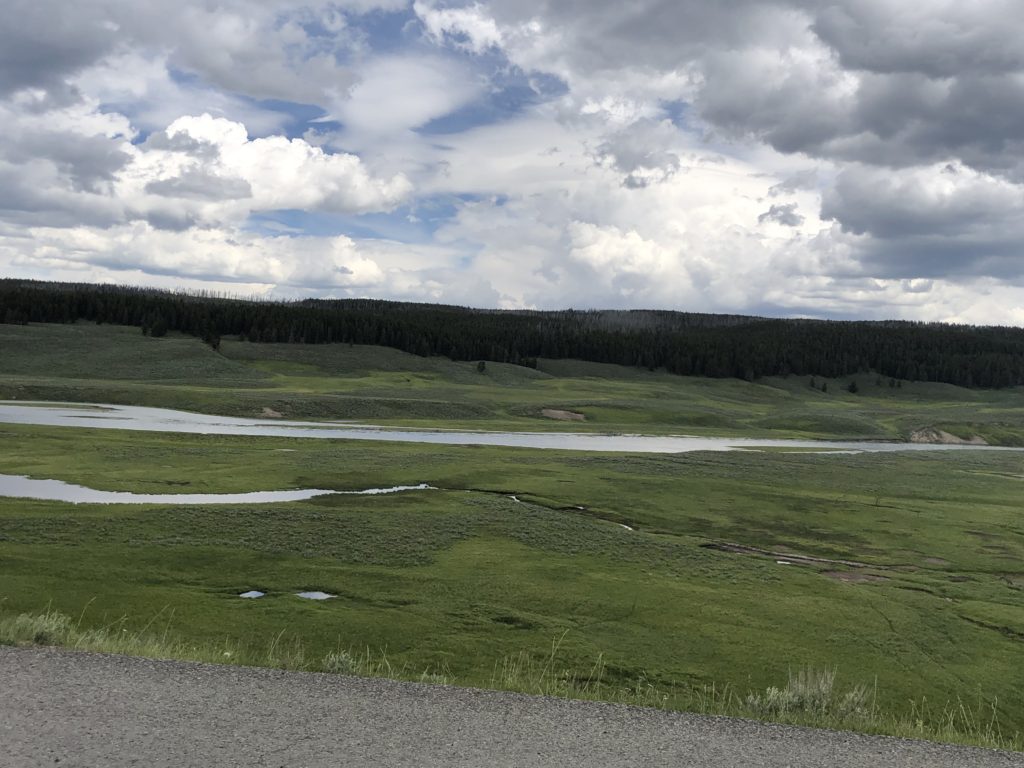










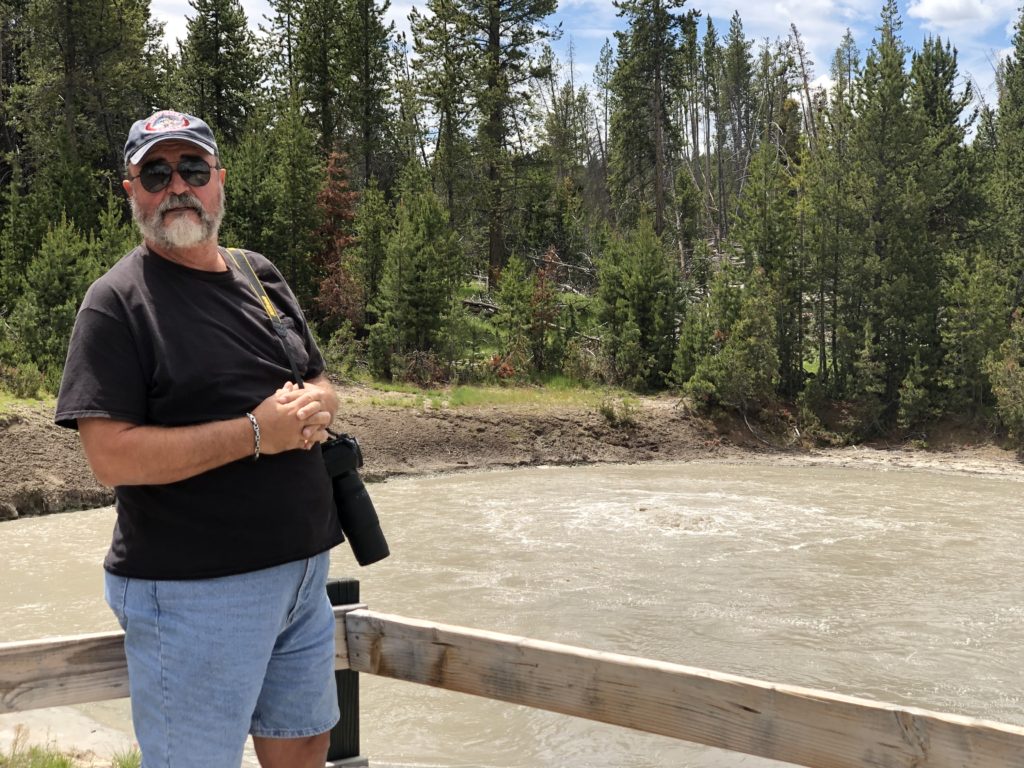



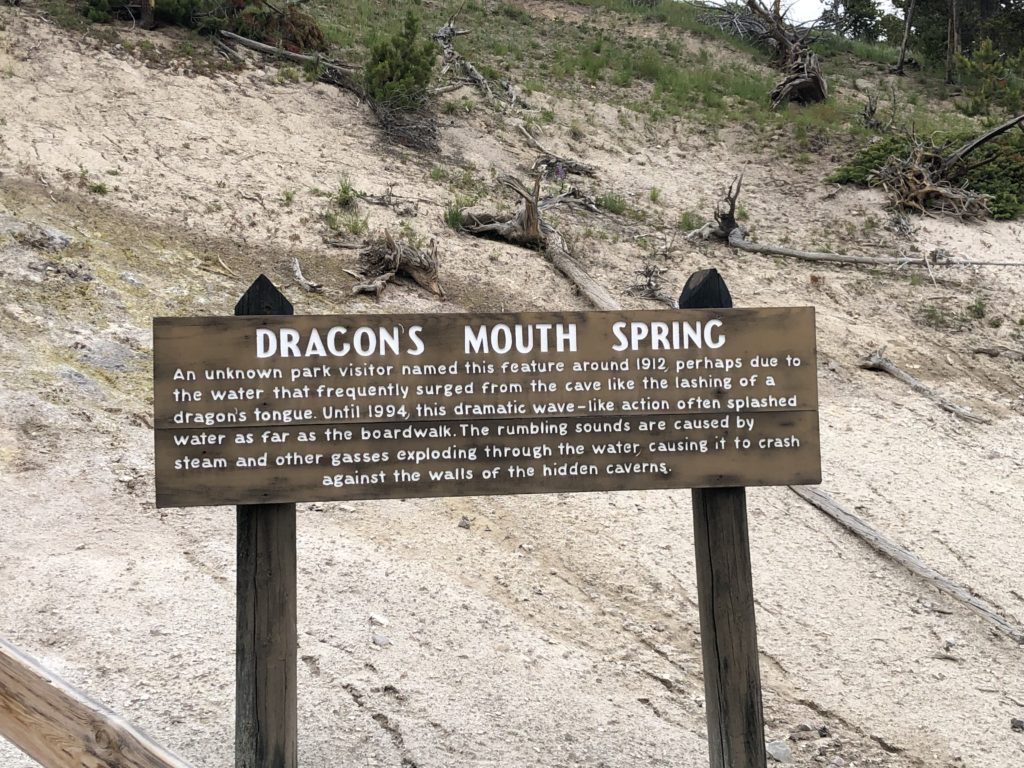






Buffalo Bill Center of the West
When we visited the Cody Visitor Center we found out that we could get discounts on purchases if we combined tour packages. We got 2 days in the Buffalo Bill Center and the Trolley Car for considerably less than if we purchased the tickets separately. We also purchased tickets for the prime rib buffet at The Irma Hotel and the Dan Miller’s Cowboy Music Review. We timed our arrival at The Irma Hotel so we could see the free gunfight show outside the hotel. The participants could have used some acting lessons, but it was still a good time.
We definitely needed the two days to see everything in the Buffalo Bill Center of the West because it contains five separate museums. The Buffalo Bill Museum has artifacts from the West and his life, including his Wild West Show. The Plains Indian Museum highlights Native American culture from a historical as well as a current prospective. The Cody Firearms Museum was just renovated and contained an electronic shooting gallery and hundreds of guns on display. Randy really liked that museum. We did not get to the Whitney Western Art Museum. Our favorites at the museum were the Draper Natural History Museum and the Raptor show. We thoroughly enjoyed the tour of the Natural History Museum. Our guide was very informative about the wildlife in Yellowstone and surrounding area. Since it was only an hour tour of the Natural History Museum, we went back the second day to do a more thorough tour.

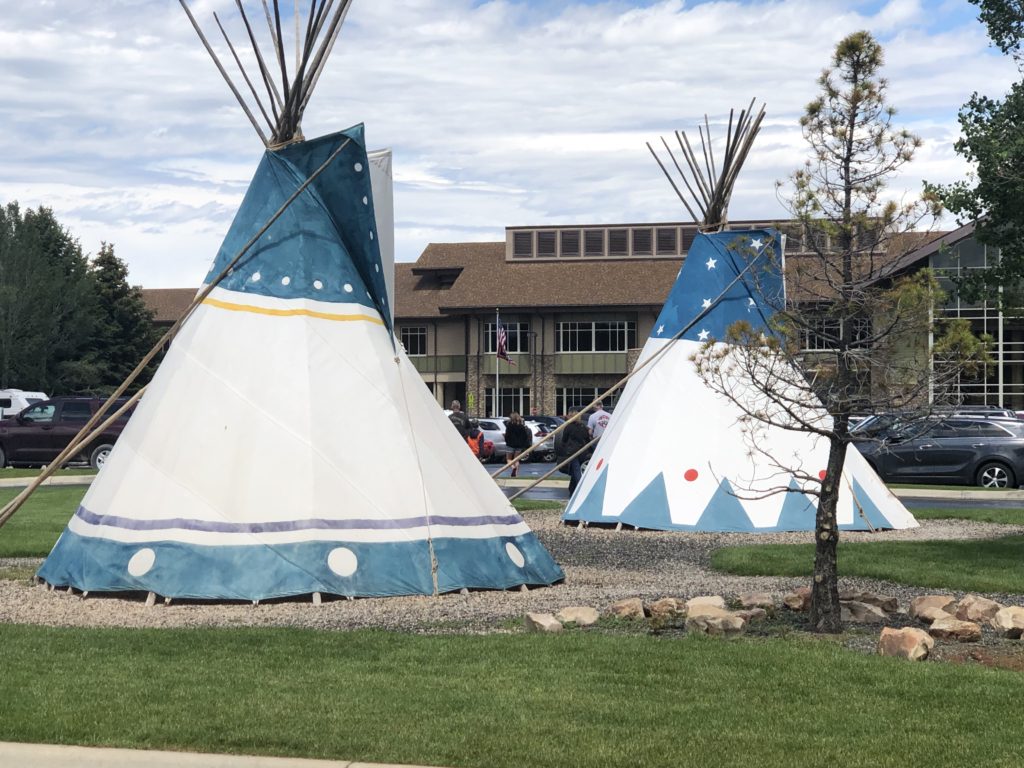







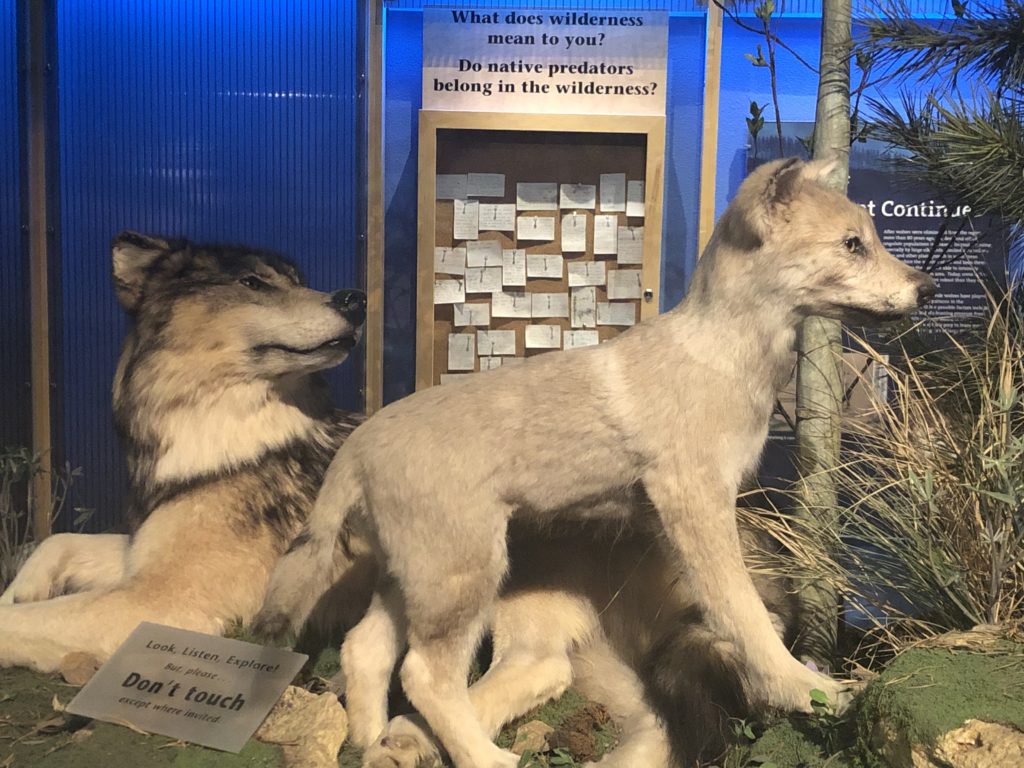



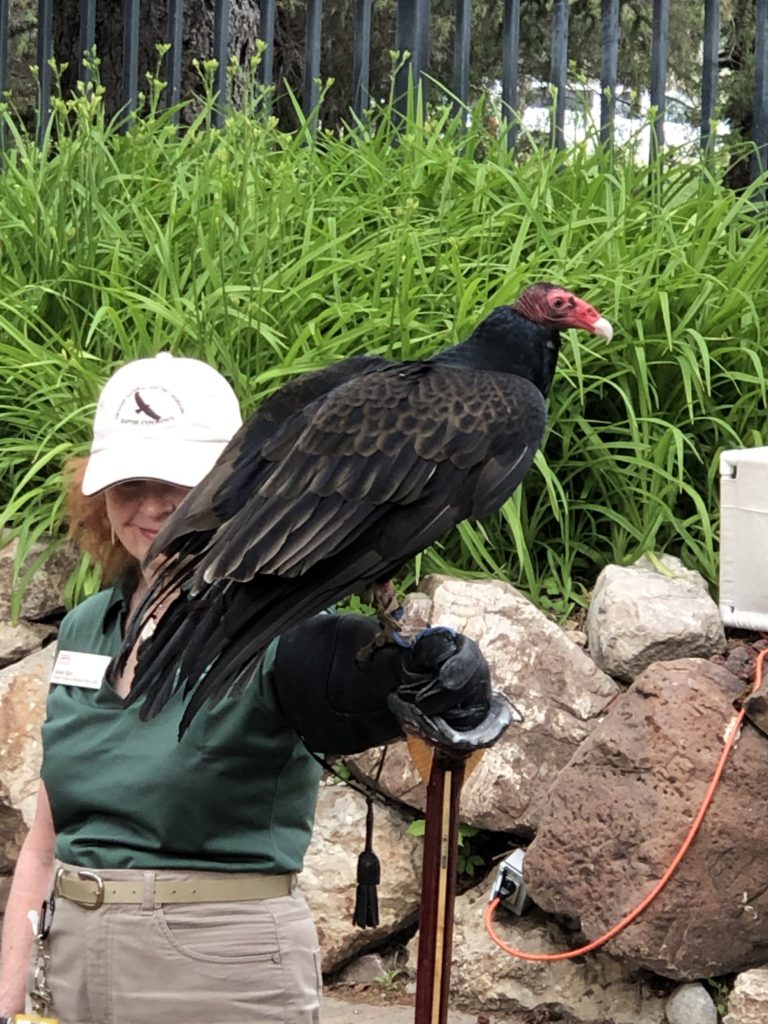













Cody Rodeo
The town of Cody uses the slogan, “Cody is Rodeo” and is known as the “Rodeo Capital of the World” since they hold a full rodeo every night in June, July, and August. When we were there they were celebrating the 100th anniversary of the Cody Rodeo. The early bronc-riding contests were staged right on main street, Sheridan Avenue. The first formal rodeo, The Stampede was organized ten years later. We were lucky to see a good show because the week of the 4th of July, the rodeo in Cody attracts some of the biggest rodeo stars because they offer the highest purses of any rodeo in America. for that time period.












